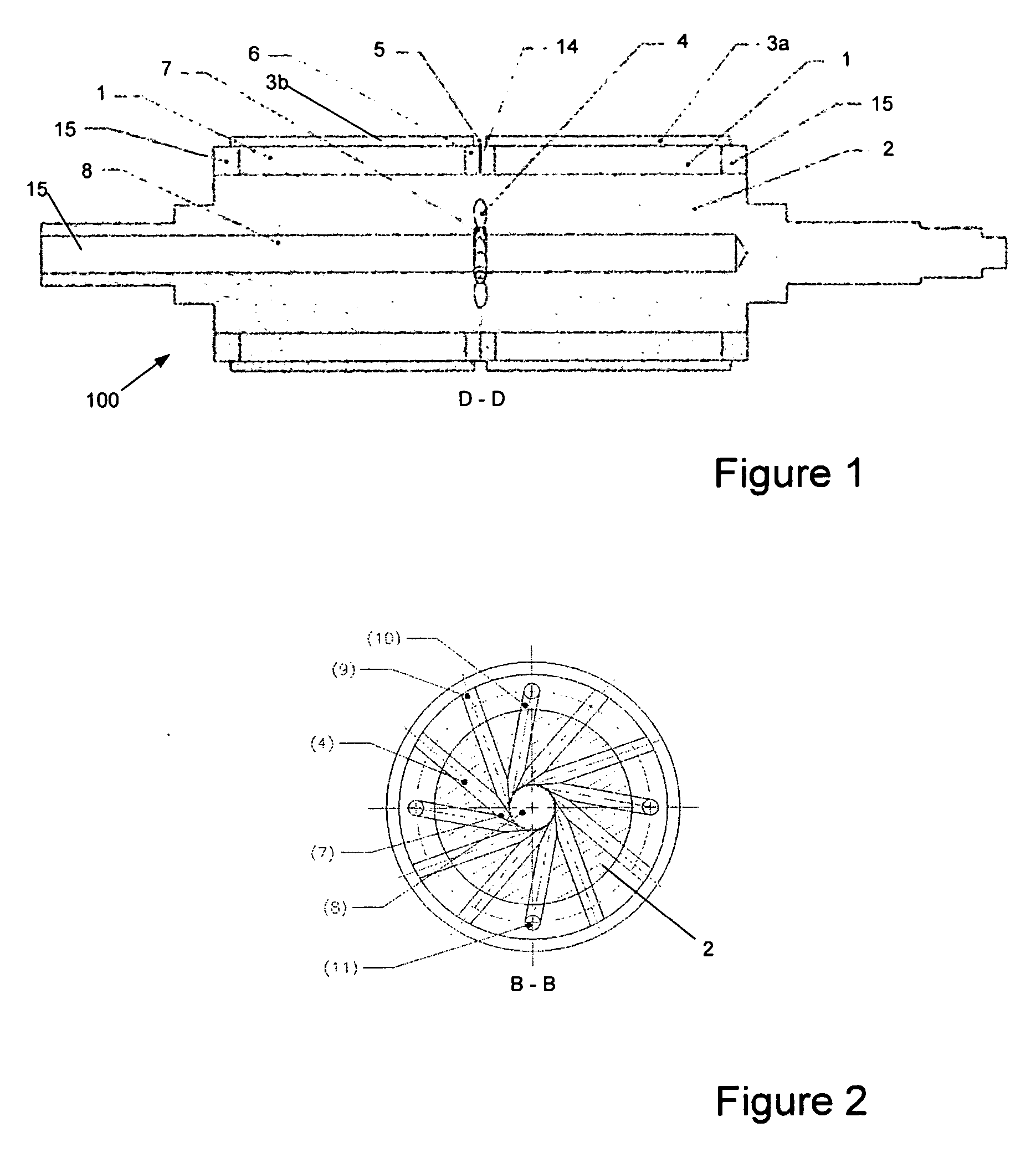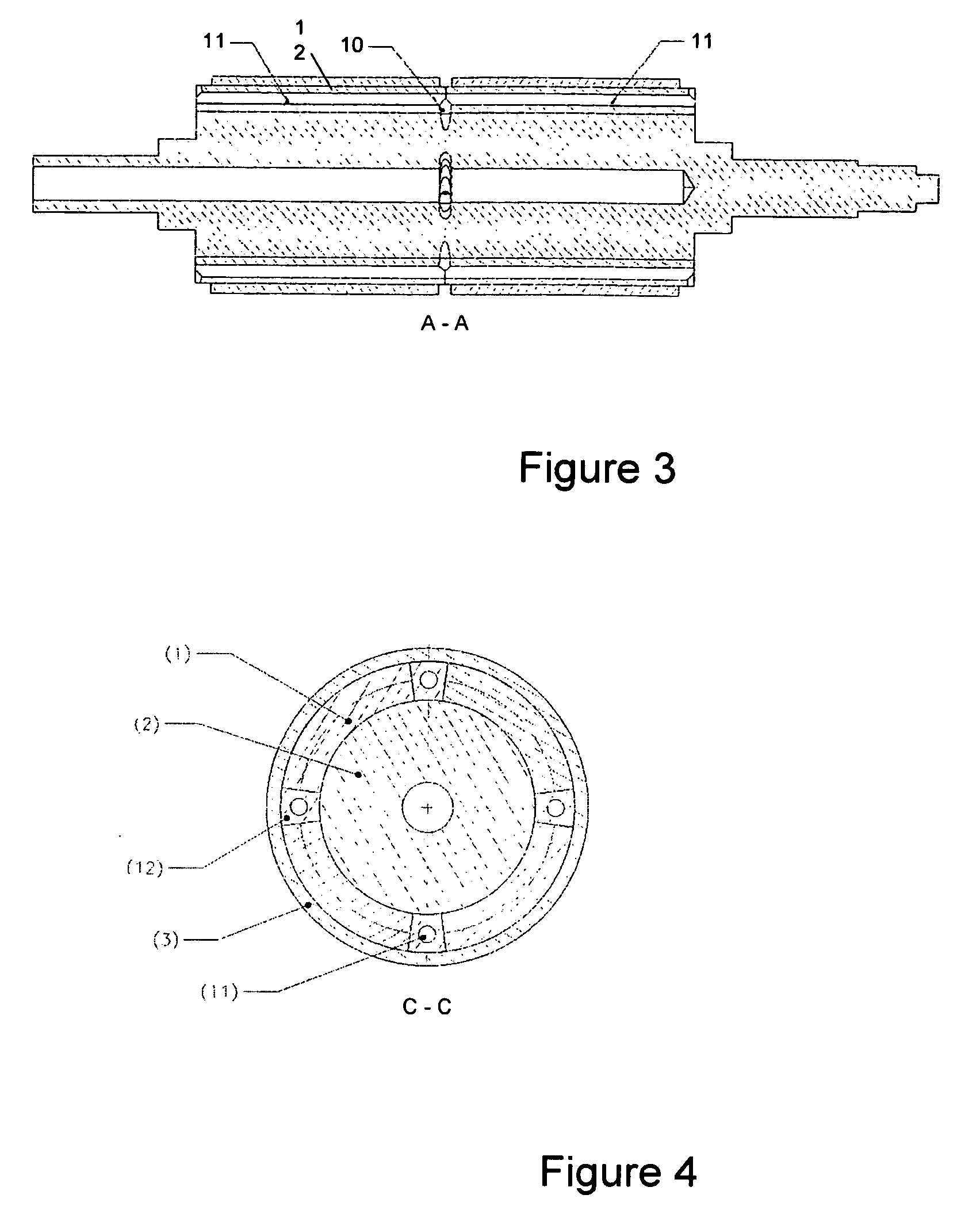Self-cooled rotor for an electrical machine
a self-cooled, electric machine technology, applied in the direction of dynamo-electric machines, electrical apparatus, magnetic circuits, etc., can solve the problems of increasing friction losses, adversely affecting the performance of both permanent magnets and carbon fibre sleeves, and increasing pressure gradients over the length of the rotor, so as to avoid high pressure and temperature gradients in the rotor and improve performance.
- Summary
- Abstract
- Description
- Claims
- Application Information
AI Technical Summary
Benefits of technology
Problems solved by technology
Method used
Image
Examples
Embodiment Construction
[0027]FIG. 1 shows an axial cross-section of a rotor 100. The rotor 100 has a generally cylindrical core 2 comprising an axial channel 8 defining a generally cylindrical blind aperture. Permanent magnets 1, which are typically constructed from a rare earth metal, are mounted to the core 2 and project a magnetic field radially outwards from the core 2. The magnets 1 are arranged in two sections with an axial gap between the sections. Axial spacers 6 are provided in the axial gap. The magnets are separated by pole spacers 12, shown in cross-section in FIG. 4, which are typically made from a non-magnetic material that has high thermal conductivity to extract heat from the magnets. The axial spacers 6 are constructed of the same material as the pole spacers 12. The axial spacers 6 and the pole spacers 12 together with additional annular sections 15 at the outer ends of the rotor form a support frame around each pole of the magnets 1. The support frame is configured as a single piece str...
PUM
 Login to View More
Login to View More Abstract
Description
Claims
Application Information
 Login to View More
Login to View More - R&D
- Intellectual Property
- Life Sciences
- Materials
- Tech Scout
- Unparalleled Data Quality
- Higher Quality Content
- 60% Fewer Hallucinations
Browse by: Latest US Patents, China's latest patents, Technical Efficacy Thesaurus, Application Domain, Technology Topic, Popular Technical Reports.
© 2025 PatSnap. All rights reserved.Legal|Privacy policy|Modern Slavery Act Transparency Statement|Sitemap|About US| Contact US: help@patsnap.com



